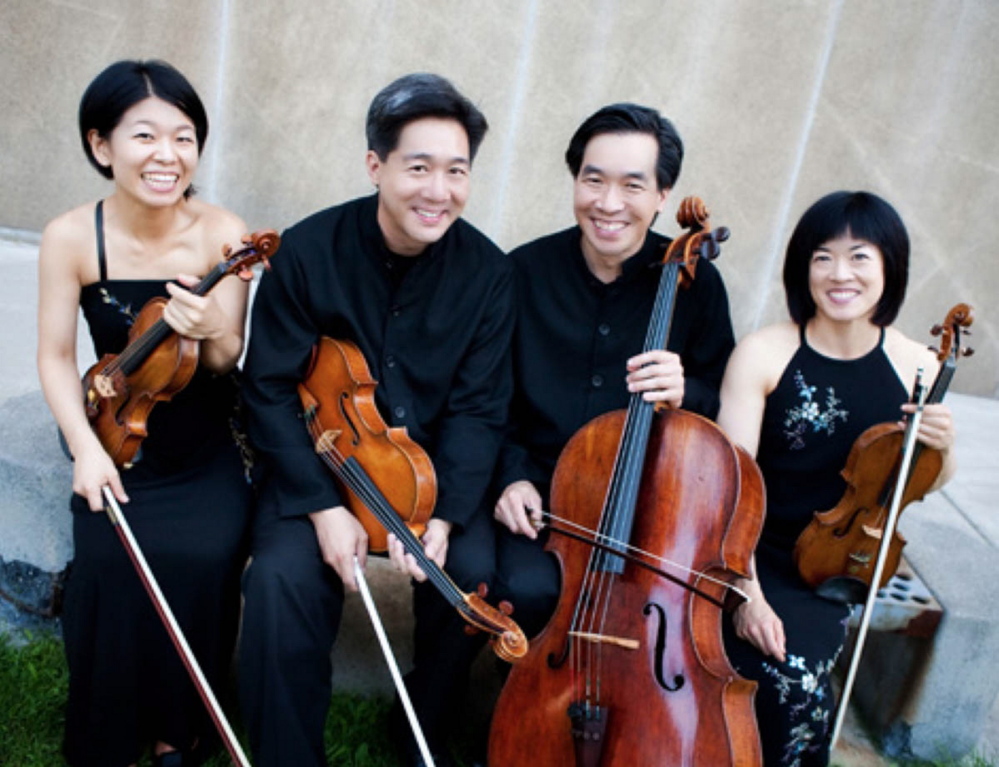If the first concert of the Bowdoin International Music Festival’s Beethoven Quartet cycle, Monday night at Crooker Theater, is any indication, the performance of all 16 quartets promises to be anything but an academic exercise.
The Ying Quartet’s reading of the String Quartet No. 12 in E-flat Major, Opus 127, and the String Quartet No. 7 in F Major, Opus 59, No.1, was both lyrical and passionate, emphasizing Beethoven’s evolving mastery of the variation style.
Audience reception of the concert series, celebrating the festival’s 50th anniversary, seemed to justify moving the Monday night concerts from Bowdoin’s Studzinski Recital Hall to the much larger Crooker Theater. There were few empty seats.
Violist Philip Ying, who with his brother David, will direct the festival in 2015, dedicated the Beethoven cycle to Lewis Kaplan, co-founder of the festival in 1964, who will be stepping down as director next near.
As Oscar Wilde observed: “Simplicity is the last refuge of the complex.” In the Opus 127, which began the concert, Beethoven exemplifies the adage with a work that sometimes sounds like a medley of folk songs and dances – at one point it approaches dangerously close to “Turkey in the Straw” – but is actually the result of months of tortuous labor to condense and simplify.
In the 12th of his cycle of quartets, the composer seems to have wanted to popularize the form. It begins with a series of long, satisfying chords, with a tremendous sonority that immediately demands attention, then transitions gracefully into a series of compelling dances.
It is in the wonderful adagio, with its operatic melodies, that the urge to simplify really makes itself felt. Beethoven is the acknowledged master of the variation on a theme, some of them so intellectualized and obscure that only a musicologist can decipher their relationship to the original tune. Here he puts his cleverness on hold, and lets the melody shine through its transitions. The lyrical result is why the Opus 127 usually leads off any recording of the complete quartet cycle.
The Opus 59, No. 1 quartet, that followed intermission, also contains a series of variations that, no matter how delightful, are intended for the delectation of the connoisseur.
What I found most striking about it, and what earned the Ying Quartet a long standing ovation, is Beethoven’s playing with cadenzas. Just when one is ready to applaud the ending of the Allegro movement, comes another recapitulation, like the famous series of false climaxes in “Beyond the Fringe.”
The technique is cleverness personified, but what was more important to the composer, or so it seems to me, is that it keeps the audience on the edge of its seats for almost an entire movement. It certainly held the attention of the crowd at Crooker, and when the really final frenetic presto exploded, it jumped to its collective feet.
Robert Schumann, after hearing the Opus 127 and the Opus 131, to be played next Monday by the Brentano String Quartet, spoke of “the furthest reaches of human art and imagination.” And he was as astute a music critic as he was a composer.
Christopher Hyde’s Classical Beat column appears in the Maine Sunday Telegram. He can be reached at classbeat@netscape.net.
Send questions/comments to the editors.



Success. Please wait for the page to reload. If the page does not reload within 5 seconds, please refresh the page.
Enter your email and password to access comments.
Hi, to comment on stories you must . This profile is in addition to your subscription and website login.
Already have a commenting profile? .
Invalid username/password.
Please check your email to confirm and complete your registration.
Only subscribers are eligible to post comments. Please subscribe or login first for digital access. Here’s why.
Use the form below to reset your password. When you've submitted your account email, we will send an email with a reset code.